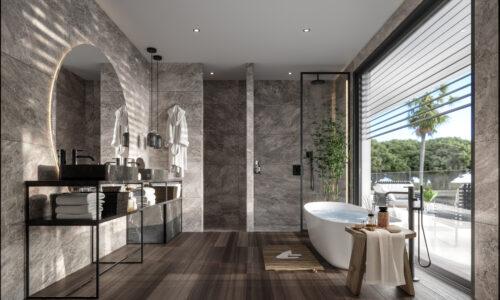
Architectural Visualisation Trends 2023
- Yissel Álvarez
- December 5, 2023
- 3D Design
- 0 Comments
In the dynamic realm of architectural visualisation, groundbreaking innovations have ushered in a new era of immersive and realistic experiences. This article explores the latest strides in architectural visualization, elucidating the advancements that are reshaping the landscape for 3D rendering enthusiasts and aspiring project developers.
Read this article: How to Make a 360 Virtual Tour for Real Estate: A Step-by-Step Tutorial
A Glimpse into Architectural Visualization
Architectural visualization, the art of crafting compelling images and animations for architectural spaces, has witnessed a transformative surge in recent years, propelled by technological breakthroughs. This evolution holds significant implications for architects, planners, and project developers, enhancing their ability to articulate and convey design concepts effectively.
Technological Marvels Driving Change: A Triad of Progress
Virtual Reality (VR): An immersive journey into architectural design
One of the pivotal breakthroughs in architectural visualization is the integration of Virtual Reality (VR). This technology allows users to engage with architectural designs in a truly immersive manner, offering architects a glimpse into how their creations will come to life. The ability to experience designs in a lifelike setting provides invaluable insights, fostering a deeper understanding of spatial dynamics.
Augmented Reality (AR): Bridging the virtual and real worlds
Augmented Reality (AR) has emerged as a powerful tool for architects seeking to showcase the integration of their designs within the real world. By overlaying images or animations onto physical environments, architects can illustrate how their creations harmonize with existing surroundings. This aids in presenting projects to clients and stakeholders, fostering a more profound comprehension of the design’s contextual impact.
Artificial Intelligence (AI): Tailoring realism with precision
The application of Artificial Intelligence (AI) in architectural visualization is revolutionizing the creation of realistic and bespoke images and animations. AI algorithms can simulate environmental conditions, such as weather or natural surroundings, contributing to a more authentic representation of architectural projects. This level of customization adds a layer of sophistication, allowing architects to tailor their visualizations to specific project requirements.
Impact on Architectural Practice: Redefining Communication
The integration of these technological advancements is reshaping the practice of architecture, empowering architects to communicate their ideas more effectively. The newfound ability to generate immersive and lifelike visualisations significantly enhances the communicative power of architectural projects.
Applications in Architectural Visualisation: From Concept to Reality
Architectural visualisation finds application across various domains, including:
- Project Presentations: Captivating clients and stakeholders Architectural visualisation serves as a cornerstone in presenting projects to clients, investors, and other stakeholders. The vivid imagery and animations aid in conveying design nuances, enabling informed decision-making.
- Urban Planning: Envisioning future landscapes Urban planners leverage architectural visualisation to envisage the integration of new buildings or urban spaces within existing environments. Visual aids facilitate a comprehensive understanding of how developments will coalesce with the surrounding landscape.
- Architectural Research: Exploring innovative concepts Architects use visualisation techniques for researching novel architectural concepts. The ability to create detailed images and animations facilitates the exploration of diverse ideas and the assessment of potential impacts.
A Glimpse into the Future
The ongoing evolution of architectural visualization is fundamentally altering the landscape of architecture, enabling architects to craft visuals that transcend traditional boundaries. As technology continues to evolve, the journey towards more immersive, realistic, and communicative visualisations is set to persist, providing architects with unprecedented tools for bringing their visions to life.
In the ever-evolving field of 3D rendering, staying abreast of these trends is paramount for those eager to embark on projects that seamlessly blend creativity with technological prowess. The future of architectural visualisation holds the promise of even more astonishing developments, and those who harness these innovations stand at the forefront of shaping the visual language of tomorrow’s architectural landscape.
If you need assistance with your architectural project and require visualization services, please feel free to contact us for further information.



